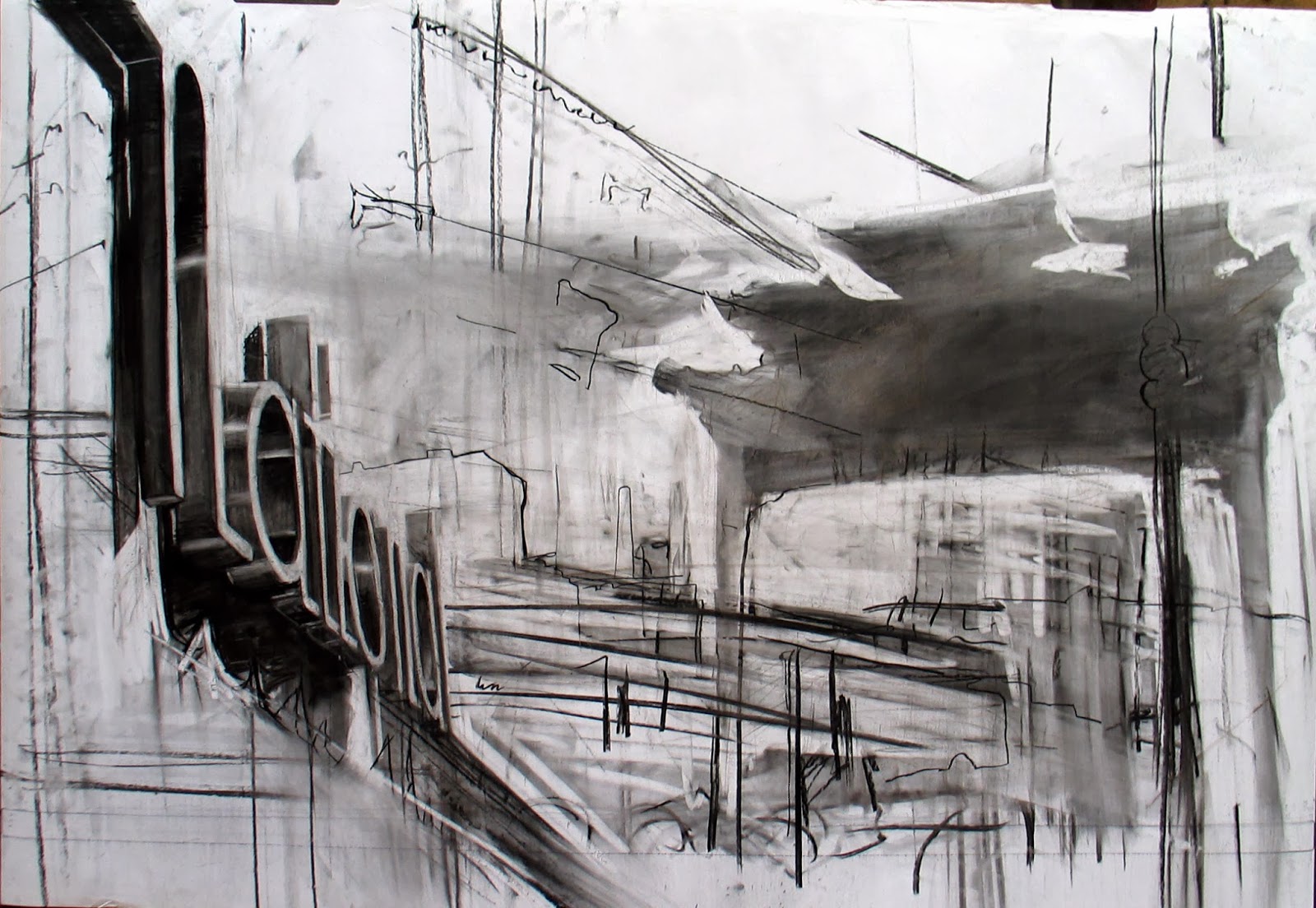Narrative art, to me, is a piece that is not only identifiable, but tells some sort of story. Now, I'm going to stop myself and say that the story does not have to necessary make sense, it just needs to have the contents for one to be able to form a logical idea towards the subject. I really enjoyed the definition in the article by Raja Mohanty because the author took a mathematical approach. I completely agree, and think that summarizing a narrative piece of artwork as something that is added together to form a certain totality of the data is the perfect way to define the word. Below are some examples of "narrative" art. . I tried to find artists that can almost bridge the gap of non-narrative to show that it doesn't have to be a comic book strip to tell a narrative.
Stephanie Nava
from the series Habites
ink on paper
2009
16" x 22"
Leonid Afremov
Downtown Lights
Oil Painting on Canvas
24" x 36"
Non-Narrative art, to me, is a piece that is completely void of an identifiable object. It doesn't mean that the viewer cannot develop a story from the piece, but the components of the piece do not add up to make a story. As mentioned above, the article by Raja Mohanty is great because it supports how I feel about the mathematical approach. The amount of the pieces refuse to total up to make a sum. I thoroughly enjoy abstract art because I love to make up my own stories about the art, and no one can tell me I'm wrong! Below are some examples of what I interpret non-narrative art as…
Jackson Pollock
Mural
Mirza Zuplijanin
Mixed Media
Figuration, in relation to art, is something that is clearly derived from real object sources. I personally think figuration and narrative artwork are synonymous, due to the fact that they both are categorized by having an identifiable object. As mentioned before, I don't necessarily think the pieces needs to have a clear vivid story attached, but it has enough elements to add up to something that exists in "real time". I suppose I do not believe that figuration can ever be classified as non-narrative. I say this because no matter what the piece is portraying, if it has an identifiable object, then it is narrating said object. Below, is a piece that I think was a great example. The work seems like it would be a non-narrative due to the lack of structure, but because of the identifiable objects (the architecture and verbiage sign) it becomes a narrative. Figuration is the beginning and end of narrative art, it makes it 'tangible'.
Kim Cadmus Owens
National
Charcoal on paper
2003
24" x 36"
Abstraction, is something that is outside the walls of concrete reality in relation to specific objects or actual instances. I think that abstraction begins and end with with non-narrative art. The fact that the piece does not have an identifiable object or idea, makes it non-narrative. You cannot tell a story that is logical based on the elements provided. I chose the image below as an example, because it gives a good idea of how abstraction works. There is no identifiable object in the piece, thus making the piece have no narrative. Sure, someone can say that he piece is a dragon eye, or trash, but there is no logic behind those idea because the piece is unidentifiable.
Jonathan Nicklow
Dark Matter
Oil Pant, tar, and tar on slab
2008
To summarize, the formal elements that are present in each, are the presence or lack there of an identifiable object. The line is hard to draw between a narrative and non-narrative piece because some people feel they can form a correct story around an abstract image. However, the amount of stories that can be developed are endless, whereas in a narrative piece there is a perimeter because more information is given. Abstraction falls into the non-narrative category, and figurative falls into the narrative, for the simple fact of an identifiable object being present.
In relation to the images of the eye, I think these terms go hand in hand. The images that do not identify as an eye read as a non-narrative. There is nothing someone can say that could be right or wrong, because the object cannot be identified. For the ones that are clearly an eye, someone can say they are the eyes of a princess or the window to the soul, but at the end of the day it is still an eye… which, to me, makes it narrative and figurative.






No comments:
Post a Comment